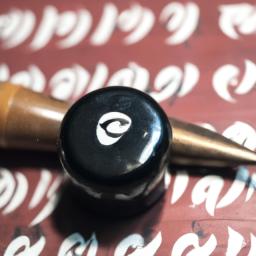Discover the beauty and history of calligraphy, a decorative and artistic form of writing. Explore its cultural significance and modern-day applications.
When was the last time you picked up a pen and wrote something by hand? In our digital world, handwriting seems to be a lost art. But for calligraphers, it’s a passion, an art form, a way of life. Calligraphy is the decorative and artistic form of writing that has been practiced for centuries around the world. From ancient China to medieval Europe, calligraphy has played a significant role in cultural expression and communication.
At its core, calligraphy is about the beauty of the written word. The word “calligraphy” comes from the Greek words “kallos” meaning beauty and “graphein” meaning writing. It’s all about the visual appeal of the written language. Calligraphers use various tools and materials to create their art, from brushes and ink to pens and paper. It’s a meticulous and precise process that requires patience, skill, and creativity.
The history of calligraphy dates back thousands of years, with evidence of calligraphy found in ancient Egypt, China, and Japan. In medieval Europe, calligraphy was used to create illuminated manuscripts, with intricate designs and illustrations accompanying the text. Calligraphy has played a significant role in religious and cultural expression, with calligraphers creating beautiful works of art for religious texts, poetry, and literature.
In modern times, calligraphy has taken on new significance. While it’s still used for traditional purposes like wedding invitations and certificates, calligraphy has also become a popular form of art and self-expression. With the rise of social media, calligraphy has found a new audience, with calligraphers sharing their work online and building communities around the art form. Calligraphy has also been incorporated into graphic design, with calligraphic fonts and designs used in branding and advertising.
In conclusion, calligraphy is a beautiful and timeless art form that has played an essential role in cultural expression and communication throughout history. In our digital age, calligraphy remains a relevant and significant form of art and self-expression. Whether you’re a seasoned calligrapher or a beginner, there’s no denying the importance and beauty of calligraphy in our modern world.
The Art of Calligraphy
Calligraphy is more than just writing; it’s an art form that requires both skill and creativity. Calligraphers use various techniques and tools to create beautiful and intricate works of art. Here are some of the techniques and tools used in calligraphy:
Techniques
- Pressure: Calligraphers use pressure to create thick and thin lines in their writing. By varying the pressure of the pen or brush, calligraphers can create a range of line widths and textures.
- Speed: The speed at which the pen or brush is moved can also affect the thickness and texture of the lines. Faster movements result in thinner lines, while slower movements create thicker lines.
- Angle: The angle at which the pen or brush is held can also impact the look of the writing. Different angles can create different line widths and styles.
Tools
- Pens: Calligraphy pens come in various shapes and sizes, each with their own unique qualities. Some pens have pointed tips for fine lines, while others have broad tips for thicker lines.
- Brushes: Calligraphy brushes are typically used for Asian calligraphy styles, such as Chinese and Japanese. They come in various shapes and sizes and are made from different materials, such as animal hair or synthetic fibers.
- Ink: Calligraphy ink is specially formulated for use in calligraphy. It’s typically thicker and more opaque than regular ink, allowing for better control and precision.
- Paper: The type of paper used in calligraphy can affect the final result. Some paper is designed to absorb ink quickly, while others are smoother and allow for more precise lines.
Different styles of calligraphy have developed around the world, each with their own unique characteristics and techniques. Here are a few examples:
Styles
- Chinese Calligraphy: Chinese calligraphy is one of the oldest and most revered calligraphy traditions in the world. It’s characterized by its use of brushes and ink, as well as its focus on balance and harmony.
- Islamic Calligraphy: Islamic calligraphy is a decorative form of writing that’s used to create intricate designs and patterns. It’s often used to decorate religious texts and buildings.
- Western Calligraphy: Western calligraphy has a long history that dates back to medieval Europe. It’s known for its use of illuminated manuscripts and intricate designs.
Throughout history, many famous calligraphers have made significant contributions to the art form. Here are just a few examples:
Famous Calligraphers
- Wang Xizhi: Wang Xizhi is considered to be the greatest Chinese calligrapher in history. He’s known for his mastery of the “Lishu” style and his contributions to Chinese calligraphy as a whole.
- Edward Johnston: Edward Johnston was a British calligrapher who is known for his work in the early 20th century. He’s credited with popularizing calligraphy in the Western world and developing the “Foundational Hand” style.
- Hassan Massoudy: Hassan Massoudy is an Iraqi calligrapher who has gained international recognition for his innovative and artistic approach to calligraphy. He’s known for his use of color and his ability to blend traditional calligraphy with modern art.
In conclusion, calligraphy is a beautiful and complex art form that requires both skill and creativity. With its rich history and diverse styles, calligraphy has something to offer for everyone. Whether you’re a beginner or an experienced calligrapher, there’s always something new to discover in the world of calligraphy.
The Benefits of Learning Calligraphy
Are you looking for a new hobby that’s not only fun but also has some amazing benefits? Look no further than calligraphy. Learning calligraphy can have a positive impact on not just your creativity but your overall well-being. Here are just a few of the benefits of learning calligraphy:
Improved Hand-Eye Coordination and Fine Motor Skills
Calligraphy requires a high level of precision and control, which can improve your hand-eye coordination and fine motor skills. As you practice calligraphy, you’ll develop a more precise and steady hand, which can translate to other areas of your life.
Calming and Meditative Effects on the Mind
Calligraphy is a form of meditation that can help calm the mind and reduce stress. As you focus on the strokes and curves of the letters, you’ll enter a state of flow that can be both relaxing and meditative. Many calligraphers find that practicing calligraphy is a form of mindfulness that can help them stay present and centered.
Enhancing Creativity and Self-Expression
Calligraphy is a form of art that allows for creativity and self-expression. As you learn different styles and techniques, you’ll have the freedom to experiment and create your own unique designs. Calligraphy can be a way to express yourself and communicate your thoughts and ideas in a beautiful and meaningful way.
In conclusion, the benefits of learning calligraphy go beyond just the art form itself. Calligraphy can improve your hand-eye coordination, reduce stress, and enhance your creativity and self-expression. Whether you’re looking for a new hobby or a way to improve your overall well-being, calligraphy is a beautiful and rewarding pursuit.
Calligraphy in Graphic Design
In recent years, calligraphy has become an increasingly popular element in graphic design. The beauty and elegance of calligraphy make it the perfect choice for creating unique and eye-catching designs. From logos to packaging, calligraphy can add a touch of sophistication and personality to any design project.
How calligraphy is used in graphic design
Calligraphy is often used in graphic design to create typography that stands out. Calligraphic fonts and designs can add a personalized touch to a brand’s visual identity. Calligraphy can be used to create logos, packaging, and advertisements that are elegant, unique, and memorable.
Examples of calligraphy in branding and advertising
One of the most well-known examples of calligraphy in branding is the Coca-Cola logo. The iconic script font used in the logo is based on Spencerian script, a type of calligraphy popular in the 19th century. The script adds an element of nostalgia and history to the brand’s visual identity.
Another example of calligraphy in branding is the logo for luxury fashion brand Chanel. The logo features a handwritten script font that adds a sense of elegance and femininity to the brand’s image.
Tips for incorporating calligraphy into design projects
If you’re interested in incorporating calligraphy into your design projects, there are a few things to keep in mind. First, choose a calligraphic font that fits the style and tone of your brand or project. Second, consider the legibility of the font, especially if it will be used for body text. Finally, use calligraphy sparingly, as too much can be overwhelming and distracting.
In conclusion, calligraphy is a versatile and beautiful element that can add personality and elegance to any design project. Whether used in branding, packaging, or advertising, calligraphy is a timeless art form that will never go out of style.
Calligraphy in Modern Culture
In recent years, calligraphy has experienced a surge in popularity, thanks in part to the rise of social media and online communities. Calligraphers have taken to platforms like Instagram and Pinterest to share their work and connect with others who share their passion for the art form. With hashtags like #moderncalligraphy and #calligraphymasters, calligraphy has become a thriving online community.
Not only is calligraphy a popular hobby, but it’s also a source of income for many artists. Calligraphers can sell their work online, whether it’s custom wedding invitations or personalized art prints. Some calligraphers even teach workshops or offer online courses to share their skills with others.
Calligraphy also plays a significant role in special occasions and events. For example, calligraphy is often used for wedding invitations, place cards, and signage. Its elegant and timeless beauty adds a personal touch to any event. Calligraphy can also be used for other special occasions like graduations, birthdays, and religious ceremonies.
In conclusion, calligraphy has found a new place in modern culture, with its popularity on social media and online communities, as well as its use in special occasions and events. Whether it’s a hobby or a source of income, calligraphy continues to inspire and captivate people around the world with its beauty and elegance.
Conclusion
In conclusion, calligraphy is a decorative and artistic form of writing that has been practiced for centuries around the world. It’s all about the beauty of the written word and the visual appeal of the language. Calligraphy has played a significant role in cultural expression and communication throughout history, from ancient Egypt to medieval Europe.
Calligraphy is not just about handwriting; it’s about creating art, expressing oneself, and inspiring others. It’s a meticulous and precise process that requires patience, skill, and creativity. Calligraphers use various tools and materials to create their art, from brushes and ink to pens and paper.
In our digital world, calligraphy remains a relevant and significant art form. While it’s still used for traditional purposes like wedding invitations and certificates, calligraphy has also become a popular form of art and self-expression. It’s a way to slow down, focus, and connect with the beauty of the written word.
At Decor Ideas Blog, we believe that calligraphy is more than just an art form. It’s a way of life, a passion, a way to connect with our creative selves and express our innermost thoughts and emotions. We hope that this article has inspired you to explore the world of calligraphy and discover the beauty and significance of this timeless art form.

